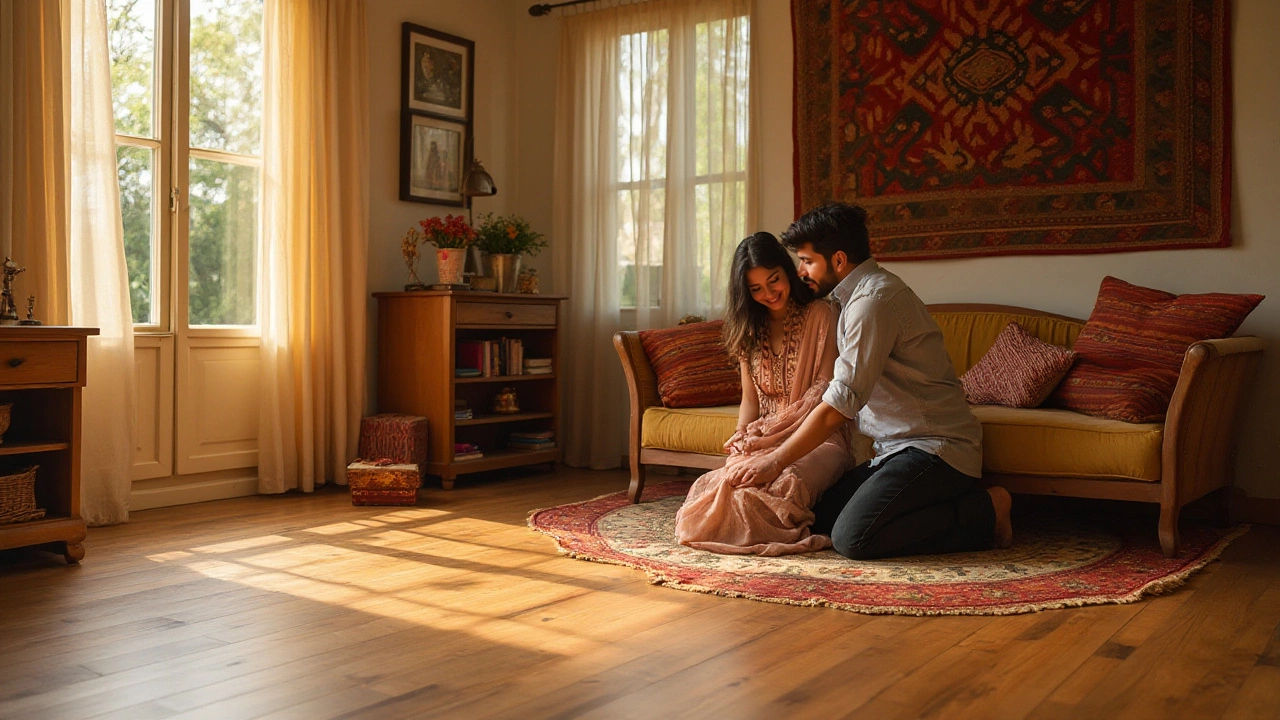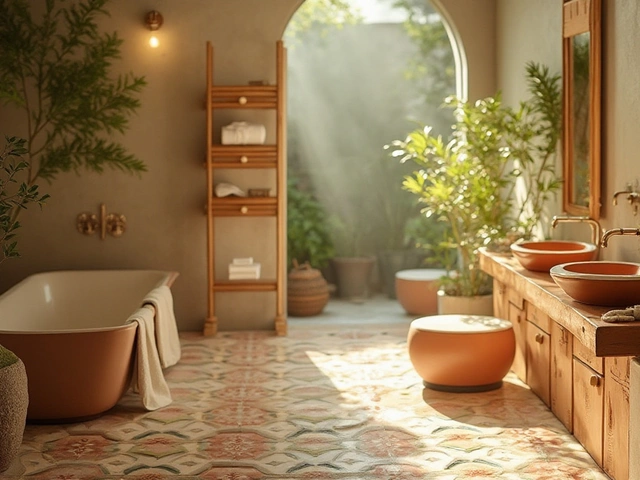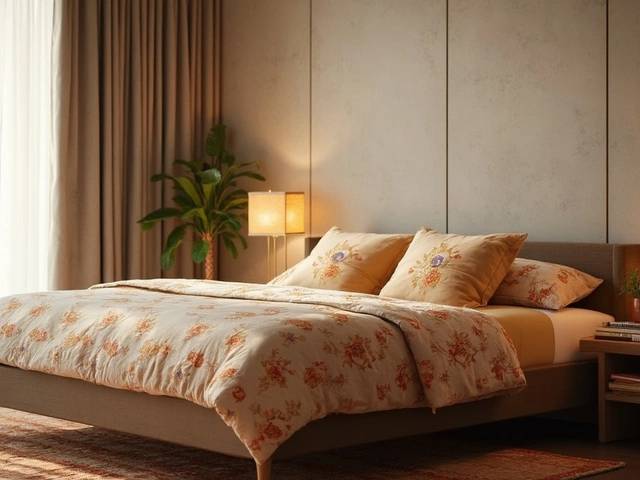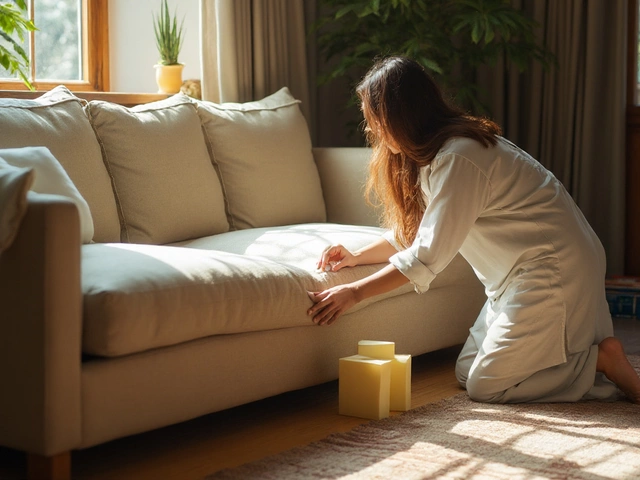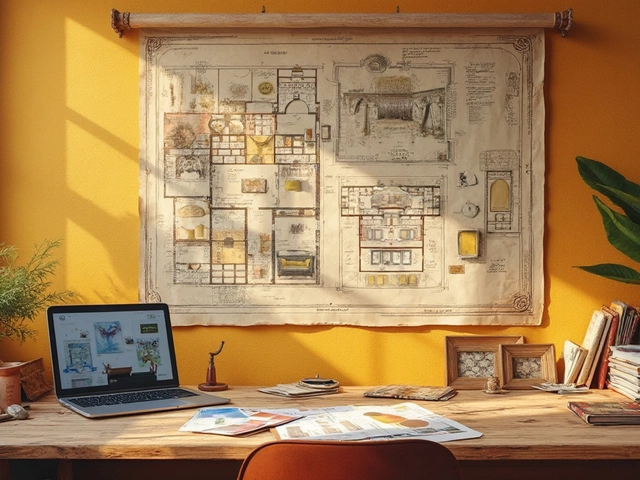When it comes to flooring, the choice isn't always straightforward. Two popular contenders in this arena are Luxury Vinyl Plank (LVP) and laminate flooring. Each brings something unique to the table, making it necessary to delve a bit deeper into what they offer.
LVP is known for its durability and water resistance, making it suitable for high-traffic areas and even bathrooms. Laminate, on the other hand, is recognized for its affordability and its uncanny ability to mimic natural materials like wood or stone. Both have their enthusiastic supporters, and the decision often boils down to personal preference and practical needs.
In this article, we'll guide you through the key factors to consider when choosing between LVP and laminate. From skillfully examining their material makeup to understanding the cost implications, we’re here to help you make an informed decision. So, let's journey into the world of flooring and explore which option might just be perfect for your home.
- Introduction to LVP and Laminate
- Material Composition and Durability
- Aesthetic Appeal and Variety
- Cost Comparison and Budget Considerations
- Installation and Maintenance Tips
Introduction to LVP and Laminate
When embarking on a home renovation project, one of the critical decisions homeowners face is choosing the right flooring material. Over the years, both Luxury Vinyl Plank (LVP) and laminate flooring have emerged as popular choices due to their versatility, cost-effectiveness, and appeal. But what sets these two materials apart? Understanding the basics of both types of flooring can be beneficial in making this crucial decision. LVP, known for its water-resistant properties, is made from multiple layers, including a rigid vinyl core, which makes it especially durable and robust. This makes it a strong contender for spaces subject to moisture, like kitchens and bathrooms.
On the other hand, laminate flooring, which gained popularity for its ability to mimic the aesthetic of hardwood, is constructed from compressed fiberboard with a decorative photographic layer on top. This layer provides the appearance of wood, stone, or other high-end materials without the hefty price tag. However, where laminate falls short is its water resistance, as prolonged exposure to moisture can cause the boards to swell and distort. According to the National Wood Flooring Association, "While laminate has advanced significantly in design, its resistance to water is less reliable compared to high-quality LVP."
Choosing between these two options often depends on the specific needs and conditions of your home. For areas prone to spills and humidity, like mudrooms or bathrooms, LVP’s water resistance might make it the preferable choice. In spaces where aesthetics are more crucial, and moisture is less concerning, laminate can offer a more budget-friendly option with a visual impact. Notably, new innovations in manufacturing have increased the realism and texture of both flooring types, giving homeowners more style choices than ever before. Ultimately, knowing the core differences between LVP and laminate is the first step toward finding the ideal flooring solution that matches both your vision and lifestyle.
Material Composition and Durability
When diving into the world of flooring, understanding the material composition and durability of Luxury Vinyl Plank (LVP) and laminate flooring can offer remarkable insights into their potential in a home setting. LVP is composed primarily of multiple layers of polyvinyl chloride (PVC) which gives it a robust and flexible nature. The layers include a protective top coating, a durable transparent wear layer, a photographic film layer that offers design, and a structural vinyl core. This intricate build provides LVP with its renowned durability and resistance to moisture, making it a strong contender for areas prone to spills or high humidity.
Laminate flooring, on the other hand, consists of a high-density fiberboard core topped with a photographic decorative layer and a clear protective layer. This composition makes laminate significantly harder than traditional wood flooring. It's this hardness that lends laminate its resistance to dents and scratches, though it might not handle excessive moisture as well as LVP. "Laminate flooring offers a design width and beauty often indistinguishable from costly hardwood," remarks an expert from Flooring Outlet. This characteristic makes it an appealing option for those aiming for a high-end look on a budget.
An interesting point of comparison is the response of both materials to environmental changes such as temperature and moisture. LVP’s PVC core provides enhanced water resistance, an attribute laminate lacks due to its wood-based fiber core. When exposed to moisture, LVP maintains its integrity, while laminate might swell or warp over time without proper sealing. These elements contribute profoundly to their overall durability over time. A survey of homeowners showed that 70% prefer LVP in areas like kitchens and bathrooms where moisture exposure is higher.
Both flooring options are backed by impressive warranties, often ranging between 10 to 25 years, contingent on the quality and brand. This longevity is mainly due to their innovative compositions designed to withstand daily wear and tear. However, it's wise to note the type of underlayment used during installation can influence the lifespan and durability of these floors. Underlayment provides added insulation and protection, which is crucial for both LVP and laminate flooring.
In terms of home improvement, the choice between Luxury Vinyl Plank and laminate not only rests on aesthetic preferences but also hinges heavily on the intended use and location within the home. High-traffic areas or spaces with potential water exposure might benefit from the toughness and water resilience of LVP. Meanwhile, rooms where visual appeal is prioritized without constant moisture threat could stand to gain from the beauty and surprising durability of laminate flooring.
| Feature | LVP | Laminate |
|---|---|---|
| Core Material | PVC | High-Density Fiberboard |
| Water Resistance | High | Moderate |
| Scratch Resistance | Moderate | High |
| Moisture Handling | Excellent | Prone to Swelling |

Aesthetic Appeal and Variety
The world of flooring is expansive, offering countless options to suit diverse tastes and preferences. When comparing Luxury Vinyl Plank (LVP) and laminate flooring, the aesthetics and variety each offers are a significant aspect to consider. The visual appeal of a room often starts with the floor, setting the groundwork for the entire space's atmosphere. Both LVP and laminate are inspired by natural materials, but they each achieve their look through different manufacturing processes. This difference influences both their authenticity and versatility, impacting your final choice.
LVP has made a name for itself by closely mimicking the appearance of organic materials like hardwood and stone. The secret lies in the photorealistic digital prints used on its surface layer, complemented by a protective clear layer that adds a refined touch. This attention to detail renders every plank not just durable but also convincing, maintaining its look even under scrutiny. The market is bursting with LVP designs, allowing homeowners to choose from classic oak to exotic bamboo patterns. Its capacity to replicate various textures and finishes adds to its attractiveness, making it a popular flooring option for those seeking elegance and practicality.
On the other hand, laminate flooring thrives on its ability to present an affordable alternative to hardwood, stone, or tile without compromising visual appeal. Its decorative layer, accentuated by an embossed surface, convincingly mimics the grooves and grain of real wood or stone. Today's laminate options often come with enhanced patterns and surface treatments, allowing them to reflect light and add depth to a room dynamically. This versatility in design suits a myriad of styles, from traditional to modern aesthetics. Many speculate that the affordability doesn't come at the price of style, making laminate a compelling choice for budget-conscious homeowners.
"The choice between vinyl and laminate often depends not on the look of the product, but on the home environment and requirements," explains Flooring Expert John Simmons. "Both options bring exceptional value and style to any home."
Intriguingly, both LVP and laminate offer not just wooden imitations but also designs that incorporate concrete-like and metallic visuals, broadening their appeal. This variety empowers homeowners to achieve bespoke aesthetics without the limitations lumber or stone typically present. Yet, there's a growing trend towards marrying these synthetic materials with full customization, allowing rooms to exude a personalized flair uniquely tailored to an individual's taste. Choosing between these options often circles back to how one balances the desire for a particular look with the overall ambiance and function of the space.
Cost Comparison and Budget Considerations
When you’re contemplating the right flooring for your home, the financial element is often a crucial factor in the decision-making process. Both Luxury Vinyl Plank (LVP) and Laminate Flooring have their own pricing structures, but what really makes one more economical than the other? To start, let's address the base cost of each. Generally speaking, laminate flooring is slightly cheaper at the outset. You can find laminate options starting at around $1 per square foot, while LVP usually begins at approximately $2 per square foot. However, this doesn’t capture the full picture of budget considerations.
One must delve deeper into what those initial costs actually entail. The installation fees can swing the overall cost, significantly influencing your choice. Laminate Flooring can often be a DIY project due to its easy click-and-lock installation system. This can save on professional installation costs, making it more attractive to budget-conscious homeowners. On the contrary, while LVP can be installed by the savvy do-it-yourselfer, it requires a bit more prep work, especially if subfloors aren’t level. This might tilt the balance back, adding unforeseen costs for professional labor.
Maintenance also plays a pivotal role in cost considerations. As both flooring types offer lower maintenance compared to real wood, they each have distinct needs. LVP edges out in areas with high moisture, like kitchens and bathrooms, due to its innate water resistance, likely avoiding future repair costs resulting from water damage.
According to interior designer Tom Scheerer, "Investing wisely in flooring can save substantial costs down the line, especially in homes with high through traffic or prone to spills and splashes.”This quote underscores the point that preventive spending can stave off future expenses, a sentiment echoed by many in the home improvement sector.
To directly compare ongoing costs, consider the longevity of each material. Both Luxury Vinyl Plank and laminate can last between 10 to 20 years, but LVP often boasts more durability. This means potentially fewer replacements or repairs over time, which translates to long-term savings, even if its initial cost is higher. The trade-off, therefore, lies in how much emphasis you place on upfront costs versus prolonged durability and the chance of future replacements. A well-chosen LVP might be a longer-lasting investment, justifying its initial higher price tag.
Lastly, while sustainability doesn’t typically align directly with cost, it can influence some buyers’ willingness to invest. Laminate often contains recycled materials, which can be a selling point for the environmentally conscious, occasionally offering incentive programs that can provide budgetary benefits. On the flip side, many LVP manufacturers are moving towards greener production methods, a feature to keep in mind when comparing prices. The cost, and indeed value, of flooring is more than monetary; it encompasses personal priorities and lifestyle needs. In conclusion, striking the right balance between immediate affordability and long-term value is key when choosing the best flooring option to meet your budget considerations.
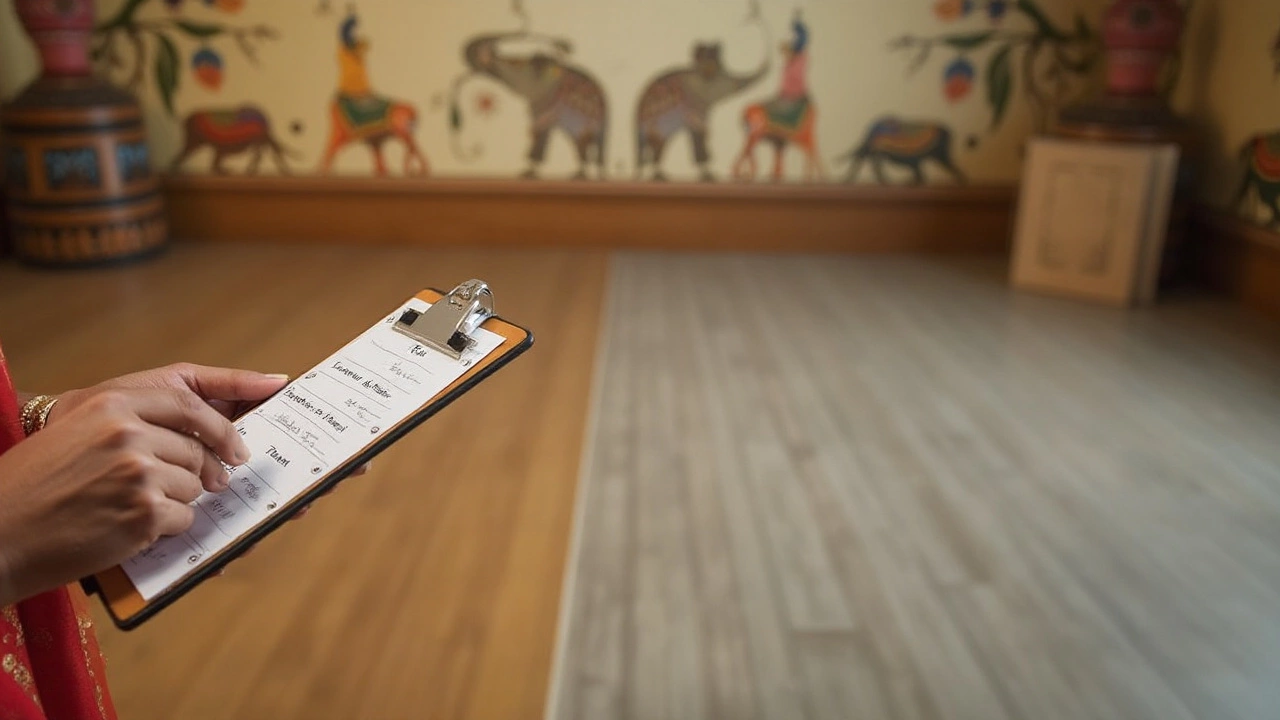
Installation and Maintenance Tips
When preparing to install Laminate Flooring or Luxury Vinyl Plank (LVP), understanding the nuances of each can ensure a successful and smooth installation process. One of the appealing aspects of both these flooring options is their ease of installation, making them a preferred choice for many homeowners, especially those interested in tackling a DIY project. However, there are specific preparations and techniques which can make the process more efficient. Firstly, acclimatization is critical. Both LVP and laminate need time to adjust to the room’s temperature and humidity before installation. Typically, you'd want to leave the planks in their new home for around 48 hours before starting your work. This helps to prevent any awkward expansion or contraction after the installation.
Getting into the actual installation, LVP often features a click-lock system that allows the planks to easily interlock, which is especially beneficial for those who might not have much experience in home improvement projects. Begin by ensuring your subfloor is even, clean, and dry. Any imperfections can lead to issues with how the flooring lays, impacting the final look. Laminate flooring, on the other hand, also uses a similar click-lock method but requires a foam underlay for added cushion and soundproofing, which acts as a moisture barrier as well. It’s important to leave small gaps along the edges to allow for temperature fluctuation, ensuring your new floors aren’t buckling or cracking over time.
Post-installation, the care and maintenance of both Luxury Vinyl Plank and Laminate Flooring are relatively hassle-free. With LVP’s stain-resistant surface, spills can be swiftly dealt with a simple damp mop, reducing the everyday wear and tear. Laminate, while also easy to maintain, may require a more gentle approach, using a soft brush or vacuum attachment to avoid scratching its surface. Regular sweeping or vacuuming using a soft brush is encouraged to prevent grit from dulling the surface for both types of flooring.
For further insights and expert advice, remember what home improvement guru Bob Vila once noted about the advantages of modern flooring, "In many cases, the advancements in material processes have made budget-friendly options like laminate and LVP appear nearly indistinguishable from their high-priced counterparts."
"These innovations have not only provided budget-friendly aesthetics but have also simplified the care and maintenance of modern flooring solutions," Vila suggests.
Lastly, don’t underestimate the power of routine checks and quick responses to any issues. Inspect seams, and edges regularly for signs of wear or damage, addressing issues promptly helps maintain the integrity of your flooring for years to come. Remember, a well-installed and well-maintained floor not only adds value to your home but also enriches the quality of your daily life.
